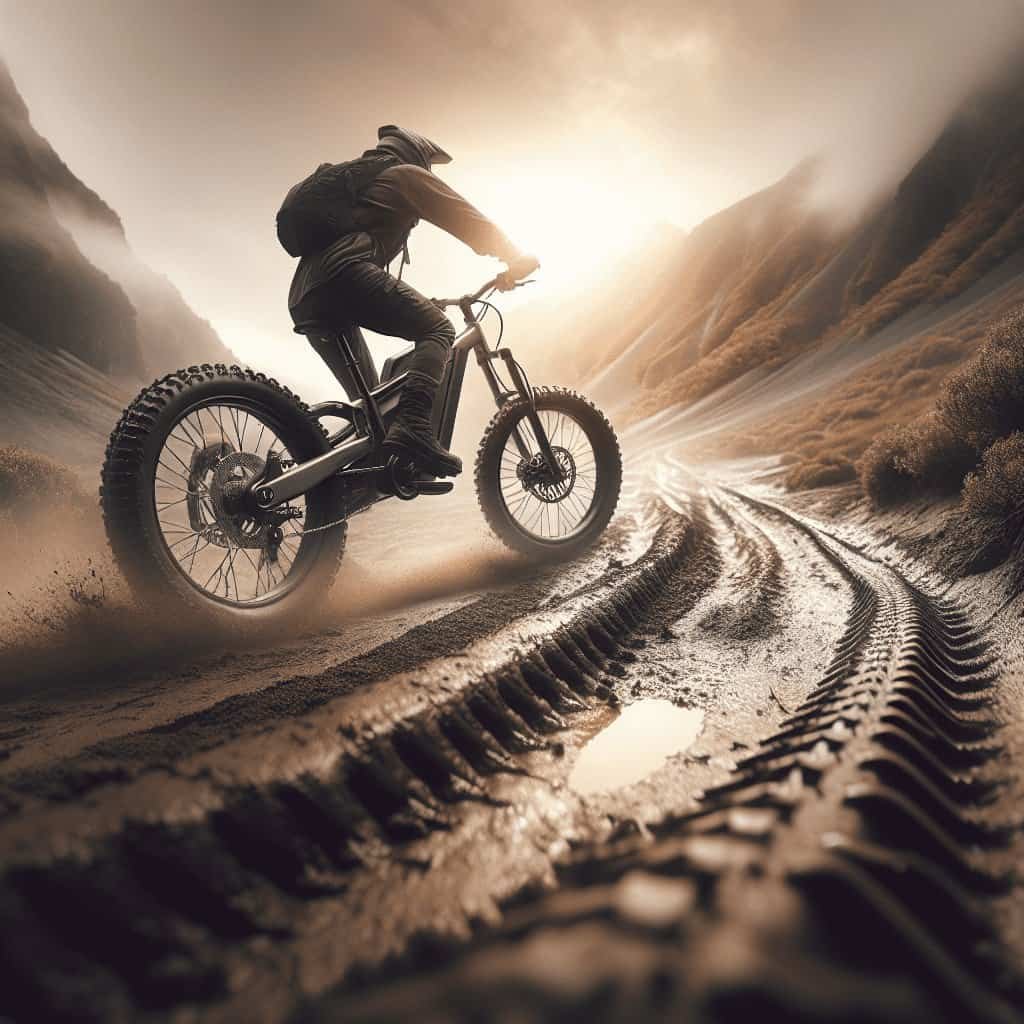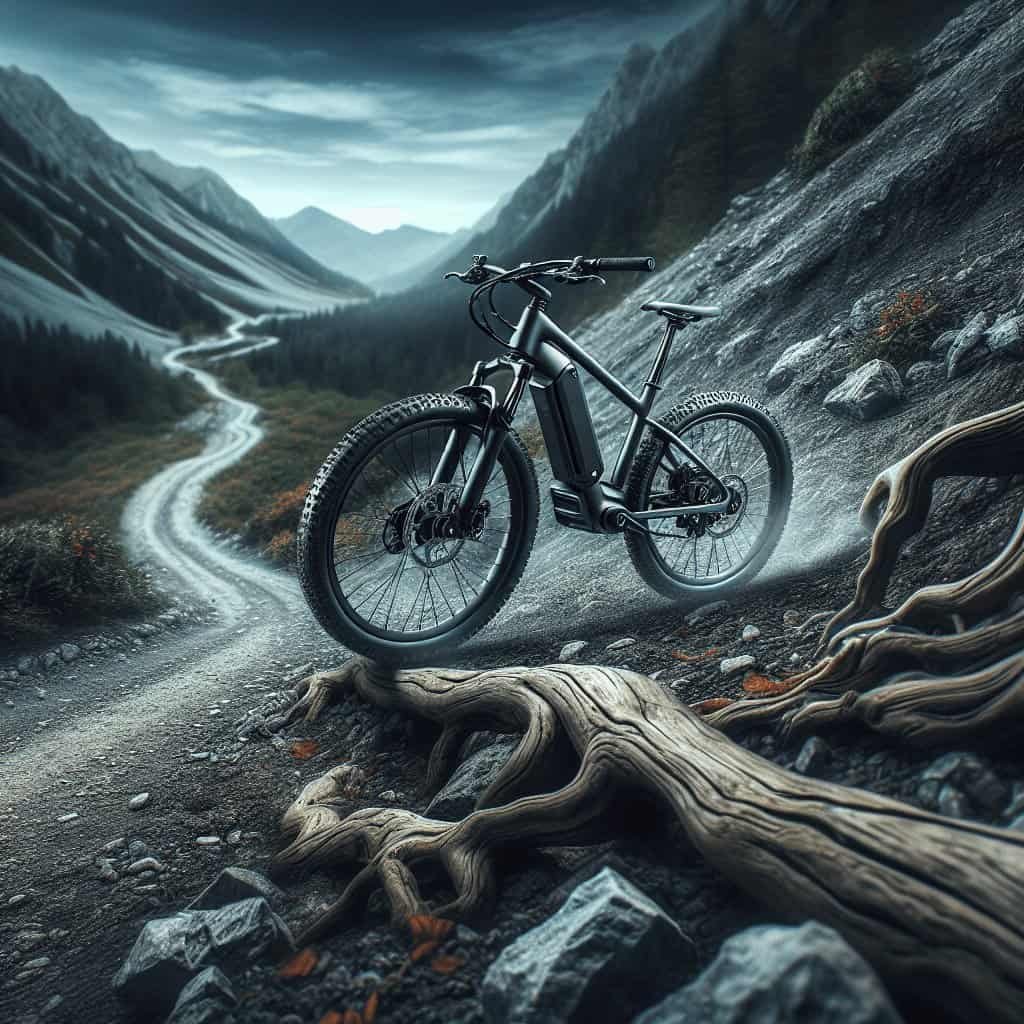If you’ve ever wondered how electric bikes fare on various terrains such as gravel or dirt, you’ve come to the right place! When it comes to navigating off-road paths or bumpy surfaces, electric bikes boast impressive handling capabilities. From their sturdy frames and durable tires to their powerful motors, these bikes have been designed to tackle a range of terrains with ease. Whether you plan on exploring rugged trails or embarking on an off-road adventure, electric bikes are ready to take you on an exciting ride. So, hop on and let’s explore how these bikes masterfully handle the challenge of different terrains like gravel or dirt!
Handling of electric bikes on different terrains

Introduction
When it comes to electric bikes, one of the most important factors to consider is how they handle different terrains. Whether you’re riding on gravel or dirt, understanding the capabilities and limitations of your electric bike is crucial for a safe and enjoyable riding experience. In this article, we will explore the factors that influence electric bike performance, delve into the specific challenges and considerations for riding on gravel and dirt terrains, and compare the performance of electric bikes on these two types of surfaces.
Factors that influence electric bike performance
Several factors play a significant role in determining how an electric bike performs on various terrains. These factors include tire type and tread pattern, suspension system, motor power and torque, battery capacity and range, frame design and materials, and weight distribution.
Tire type and tread pattern greatly influence how an electric bike handles different terrains. The right tire choice can provide optimal traction, stability, and durability. Additionally, the suspension system plays a vital role in absorbing shocks and smoothing out the ride, especially on rough terrains.
The motor power and torque of an electric bike dictate its ability to overcome inclines and maintain speed. A more powerful motor can provide better acceleration and handling on different terrains.
Battery capacity and range determine how far an electric bike can travel before needing a recharge. It is crucial to consider the battery’s endurance when riding on terrains that may demand more power, such as uphill climbs or challenging surfaces.
The frame design and materials impact the overall stability, handling, and maneuverability of the electric bike. A well-designed frame can provide enhanced control and comfort, particularly when riding through rough terrains.
Lastly, weight distribution affects the bike’s balance, traction, and stability. Electric bikes with a well-balanced weight distribution can handle different terrains more effectively.
Electric bikes on gravel terrains
Gravel terrains are often uneven and inconsistent, posing their own set of challenges for electric bike riders. Gravel surfaces can range from loose stones to compacted gravel roads, requiring different considerations for optimal performance.
When riding an electric bike on gravel terrains, tire considerations become crucial. Choosing wider tires with a knobby tread pattern provides better traction and stability on loose gravel surfaces. The wider surface area of the tire also helps to distribute the weight evenly, reducing the risk of slipping or skidding.
Maintaining a lower tire pressure than usual can further improve the bike’s grip on gravel. This allows the tire to conform to the irregularities of the terrain, providing better traction. However, it is crucial to avoid overinflating the tires, as this can lead to a bumpy and uncomfortable ride.

Electric bikes on dirt terrains
Dirt terrains can vary significantly, ranging from hard-packed dirt trails to muddy and loose surfaces. Each type of dirt terrain requires specific considerations to ensure a safe and enjoyable ride.
Just like on gravel terrains, tire considerations are essential for riding on dirt. However, the tread pattern and tire width may differ. For hard-packed dirt trails, tires with a lower profile and smoother tread pattern are ideal. These tires provide lower rolling resistance and better efficiency on stable surfaces.
When dealing with loose dirt and mud, wider tires with more aggressive tread patterns are necessary. These tires offer improved traction and grip, allowing the rider to navigate through challenging terrains with ease. It is also essential to lower the tire pressure on dirt terrains, as this helps to increase the tire’s surface area in contact with the ground, providing better stability.
Handling obstacles on dirt terrains can be quite challenging. Electric bikes with a suspension system play a crucial role in absorbing impacts from rocks, roots, and other obstacles present on dirt trails. A well-functioning suspension system helps to smoothen out the ride and improves the bike’s overall stability and control.

Comparing electric bikes on gravel and dirt terrains
When comparing electric bikes’ performance on gravel and dirt terrains, several factors come into play.
The performance and stability of an electric bike can vary depending on the terrain. Gravel terrains, with their loose and inconsistent surfaces, may demand more effort to maintain stability compared to hard-packed dirt trails. However, on both terrains, a well-designed electric bike with the right tire choice and proper suspension system can provide a stable and controlled ride.
Handling and maneuverability are also essential factors to consider. Electric bikes that offer responsive handling and sharp cornering abilities perform well on both gravel and dirt terrains. A bike that can quickly adapt to changes in the terrain and navigate tight turns ensures a fun and enjoyable riding experience.
The impact on bike components, such as the frame, suspension, and tires, also differs between gravel and dirt terrains. Gravel terrains can be harsher on bike components, particularly the tires, due to the loose stones and rough surfaces. On the other hand, dirt terrains with obstacles like rocks and tree roots may put additional strain on the bike’s suspension system. Choosing a bike with durable components that can withstand the demands of the chosen terrain is essential for longevity and performance.
Finally, the rider’s skills and experience should be taken into account. Riding on both gravel and dirt terrains requires confidence and adaptability. Experienced riders with good balance and control are likely to handle the challenges of these terrains more effectively, regardless of the electric bike they are using.
In conclusion, understanding how electric bikes handle different terrains like gravel and dirt is crucial for making an informed choice about the right bike for your needs. By considering factors such as tire type, suspension system, motor power, battery capacity, frame design, weight distribution, and rider skills, you can find an electric bike that excels on your preferred terrain. Whether you’re exploring gravel paths or tackling dirt trails, electric bikes offer an enjoyable and versatile way to navigate various terrains with ease. So get out there and embrace the adventure of off-road electric biking!



